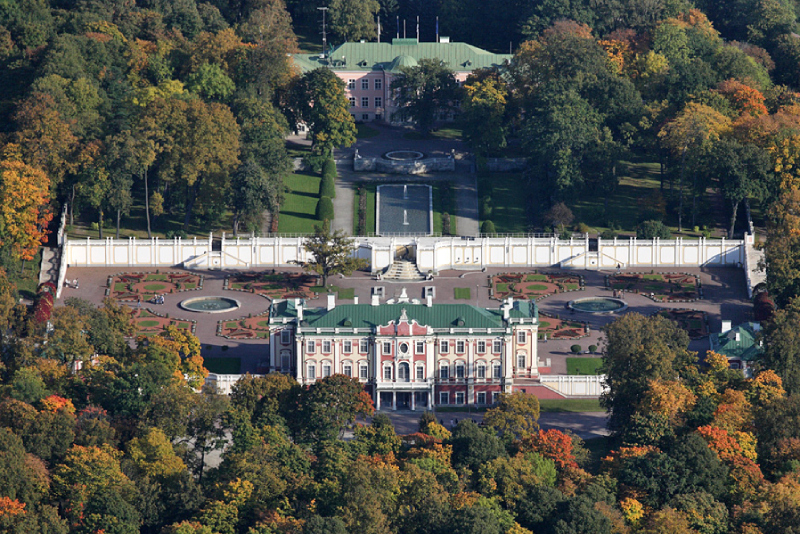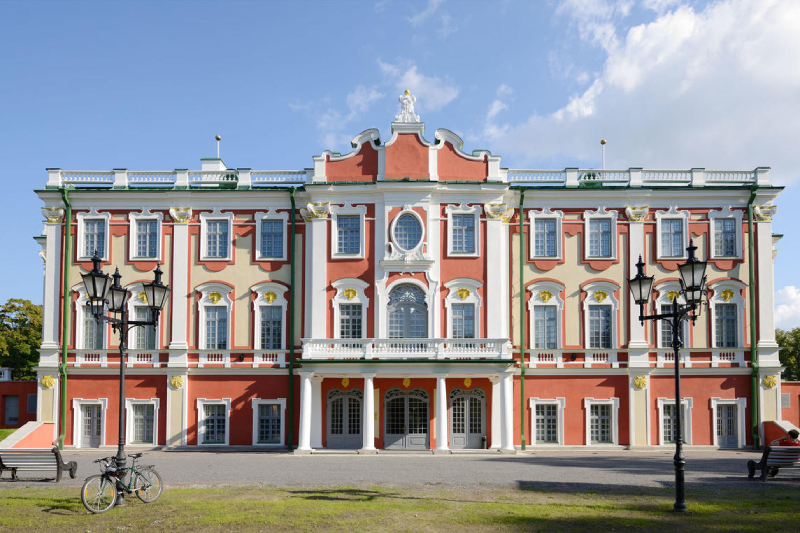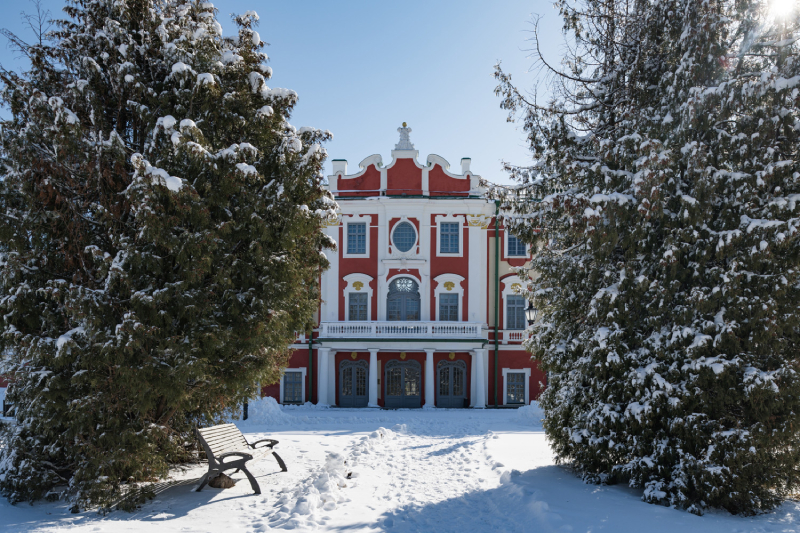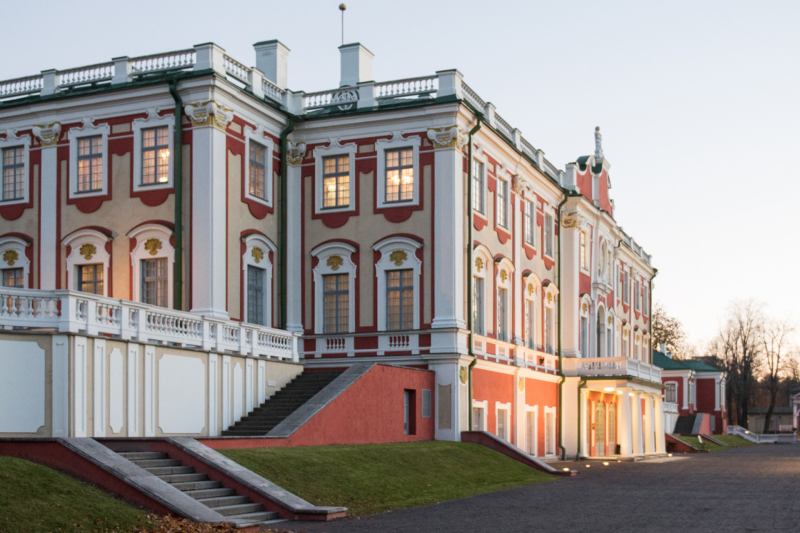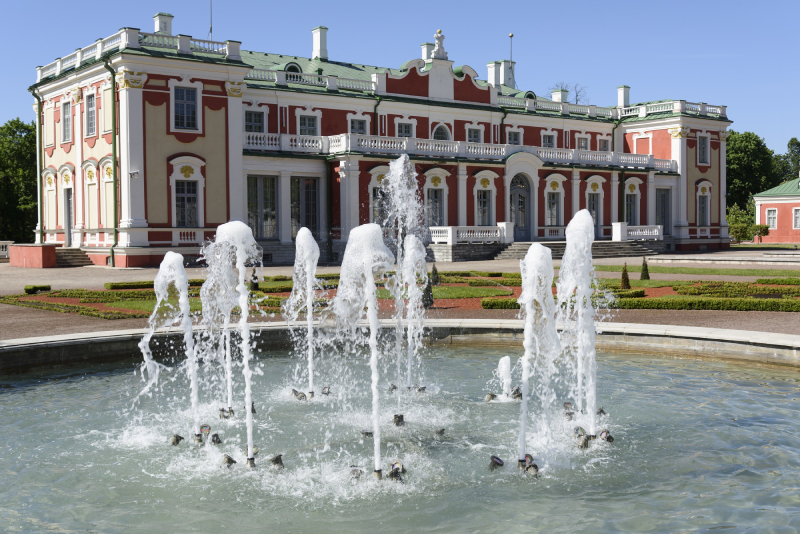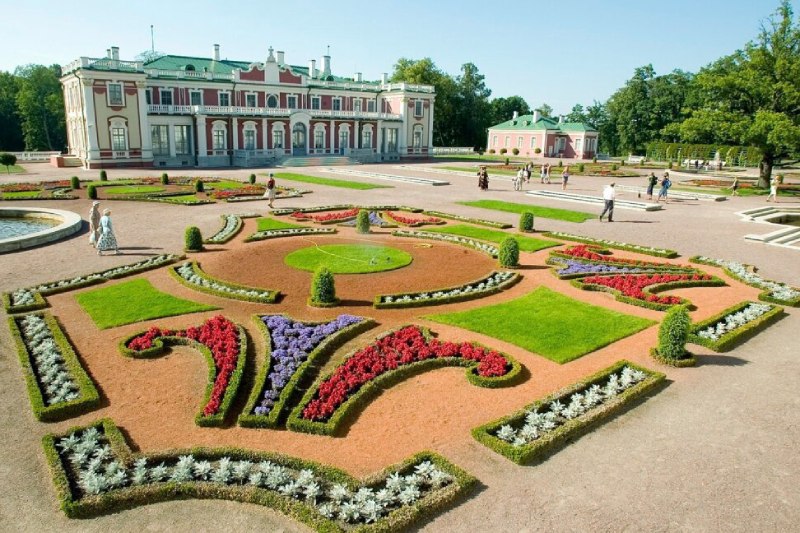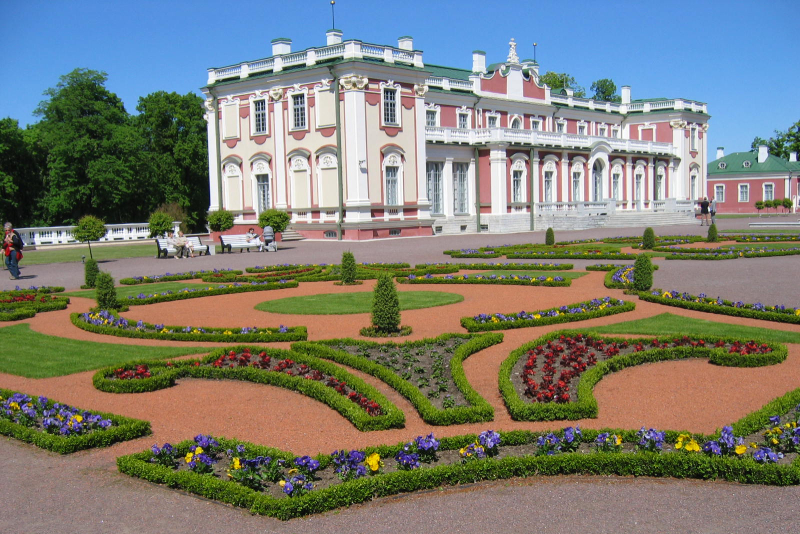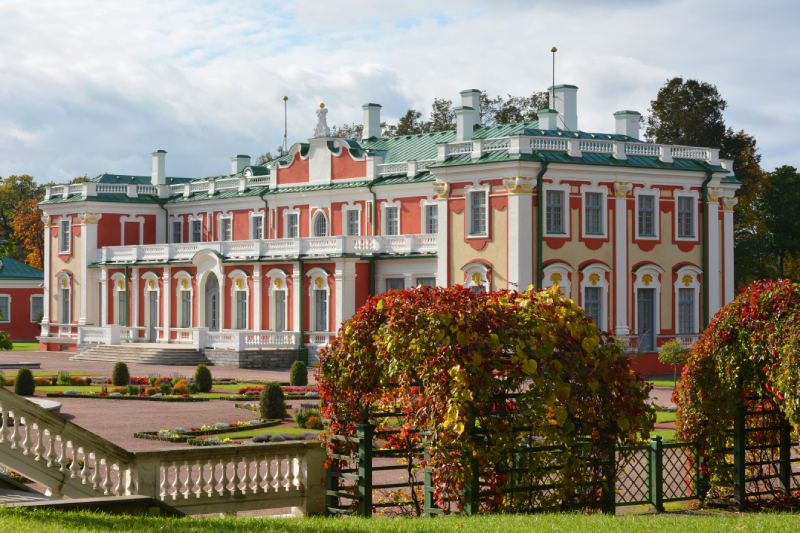The Kadriorg Art Museum
Weizenbergi 37, Tallinn
The construction of the Kadriorg Palace was started by the Tsar Peter the Great of Russia in 1718. It was named Kadriorg (in German Catharinenthal) in honour of his wife Catherine I. The palace was designed by the Italian architect Nicola Michetti and its abundantly decorated main hall is one of the most exquisite examples of baroque architecture both in Estonia and in northern Europe.
Kadriorg Palace has always been the crown jewel of Tallinn. The small festive tsars’ palace in the style of Roman Baroque, surrounded by a regular garden, with fountains, hedges and flowerbeds, planned after the model of Versailles, was erected on the shore of the Gulf of Finland, according to the wishes of the Russian ruler Peter I.
Most of the Russian rulers visited the imperial summer residence. Great changes in the life and in the interior of the palace occurred in the fi rst half of the 19th century, when Tallinn, which had become a fashionable holiday resort, was often visited by Nicholas I and his family. The palace served as the main building of the Art Museum of Estonia in the 1920s, and again in 1946–1991. In the 1930s, it was the residence of the Head of State of the Estonian Republic. During that period, extensions to palace were added – the banquet hall and orangery; many rooms were redecorated.
In 2000, the palace was opened as the Kadriorg Art Museum, which displays the largest collection of old Russian and Western European art in Estonia. The renovation project was prepared by Enn Laansoo Architects AS and the construction management was organized by Laansoo Ehitus AS
